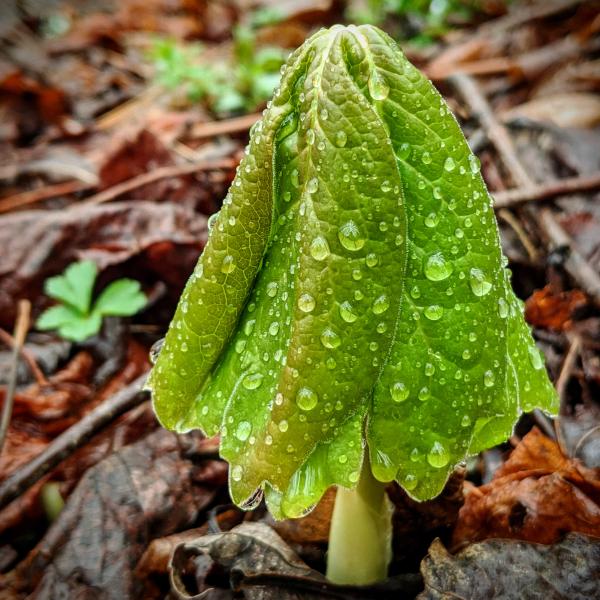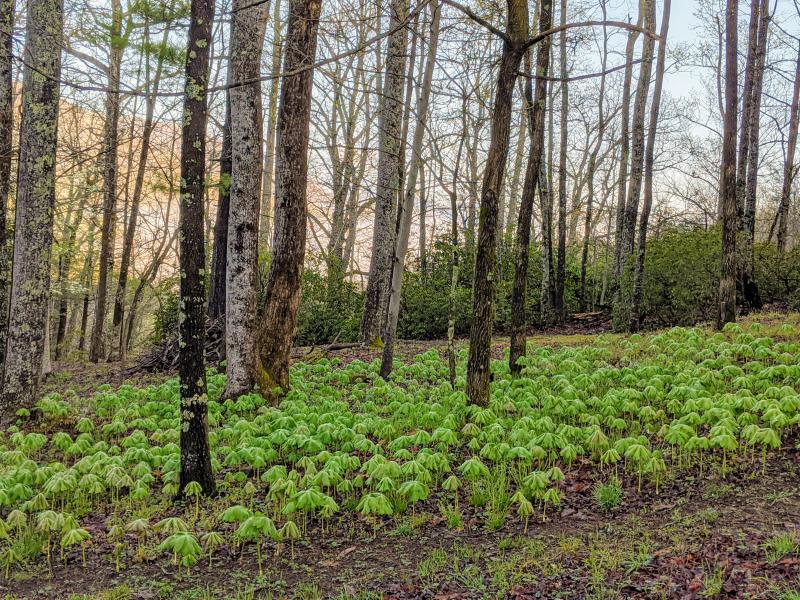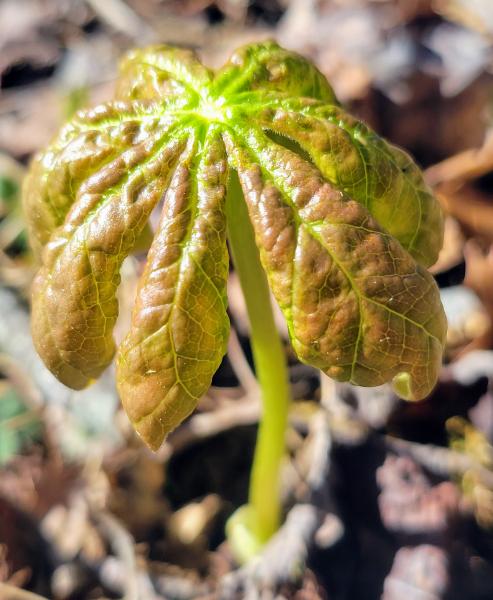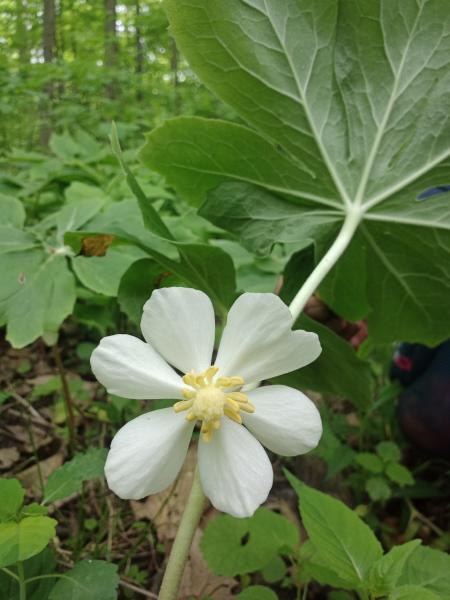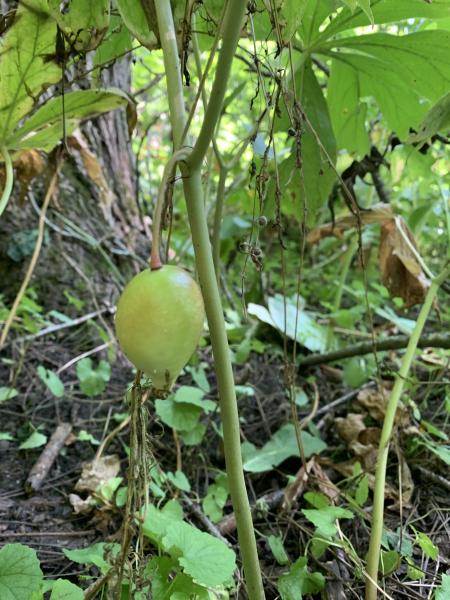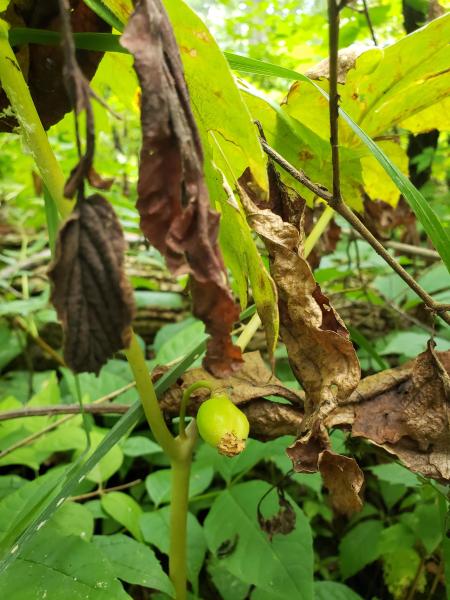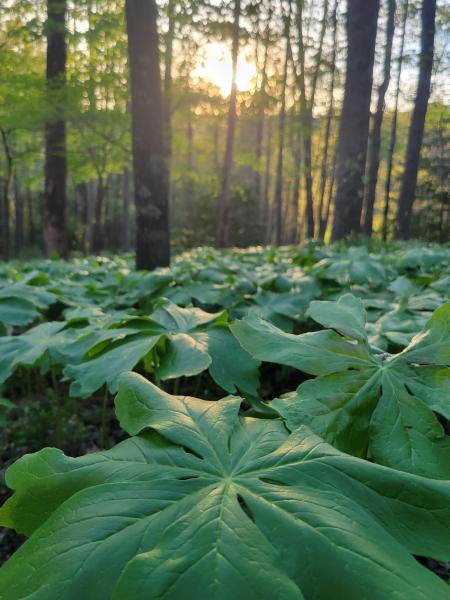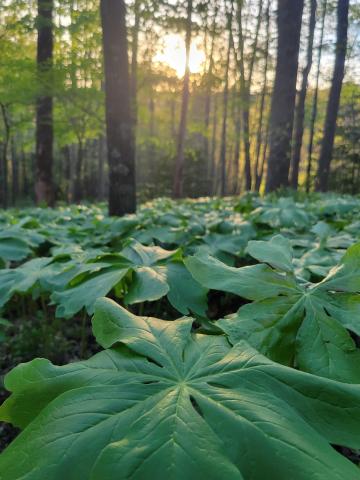
Names and Their Meanings
Mayapple - Podophyllum peltatum L.
Mayapple
Description
Mayapple is a perennial herb with opposite leaves arising directly from the rhizome. The leaves are palmately lobed, with 3-9 deep lobes, and lobe margins coarsely toothed. Flowers are solitary and arise between two leaves. The bisexual flowers are white or pink and occur in 6-9 parts. The fruit is a yellow or red berry. May-apple also reproduces vegetatively by spreading rhizomes. This is a shade tolerant species, and forms part of the understory community in mid to late successional forests.
Conservation Status
S5 (Secure) in Ontario
Uses
Mayapple appears in Frederick Wilkerson Waugh’s notebooks on foods, in the section on wild fruits. It appears from his notebook that Chief David Jack is one of the people who shared the knowledge within. Mayapple is listed as mandrake, to “use as regular food on table raw, not as a preserve” (Waugh, 1912). Contemporary Haudenosaunee knowledge teaches that mayapple fruits are only edible when they are ripe and yellow, usually in July or August. This dovetails with Waugh’s notes, which records that mandrakes were sometimes “gathered, covered with dirt and left for a week or two, when they became ripe.” Waugh also recorded that Peter John advised him to make a decoction of the leaves and soak corn seeds in it, to help them begin to germinate and prevent birds and insects from eating the seeds.
Terrylynn Brant (Serasera), Mohawk knowledge keeper from Six Nations, described in an interview Dr. Dolan did with her in 2011, That mayapple is a corn medicine (insecticide), and the fruits can be eaten but only when yellow. Terrylynn described making a tea from the mayapple, and soaking the corn seeds in it, to sprout them before planting. Alyssa General has been taught the same at Six Nations, possibly from Terrylynn Brant, noting that there is something in it that deters bugs from eating it. The phenology of mayapples as spring ephemerals is such that their medicine arrives just in time for preparing corn for planting. Other Haudenosaunee and Anishinaabe uses of mayapple, recorded by Erichsen-Brown are: Huron Smith described Anishinaabeg uses of this plant as an insecticide for potato bugs; the fruits as a food and laxative; and other parts of the plant a cathartic, emetic, and purgative (because they are poisonous; H. Smith, A. Parker, Bye, p. 327).
